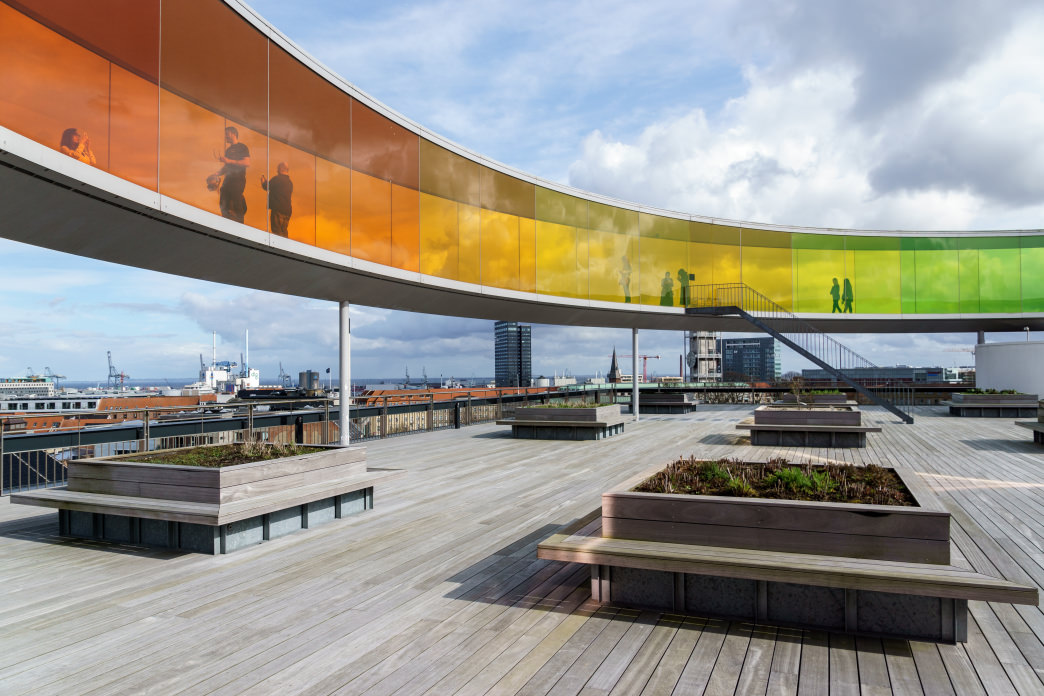From the canals of Venice to the cafés of Paris, Europe is home to some of the world’s most spectacular cities. But while iconic metropolises like London, Rome, and Madrid are certainly at the top of the any European traveler’s ticklist, there are also plenty of overlooked urban areas scattered across the continent. Here are just a few underrated treasures worth adding to any European itinerary.
1. Salzburg, Austria

Adam Fagen
Medieval and Baroque styles converge along the banks of the Salzach River in Salzburg, a city still overseen by an 11th-century fortress. Perched high on the cliff, Festung Hohensalzburg is one the largest and best-preserved citadels in Europe.
Mozart’s hometown pays homage to its favorite son with classical concerts held almost daily. Many are performed by students of the local Mozarteum University and the concerts are often held at iconic locations, like the Mirabell Palace and Gardens (Schloss Mirabell)—a stately palace built at the beginning of the 17th century.
Mozart isn’t the only musical game in town, though. The city of Salzburg and surrounding areas also provided the backdrop for the beloved classic The Sound of Music. Besides serving as the movie’s location, a young woman named Maria did actually reside at Salzburg’s 1,300- year-old Nonnberg Abbey and was sent to be a governess to Captain von Trapp, who would later become her husband. Despite some cinematic embellishment, the von Trapps did perform at the annual Salzburg Festival before their flight from Austria, and their former home still stands just miles south of Salzburg in Aigen. It’s now the elegant Villa Trapp hotel where you can book a room or take a guided tour.
Best of all, after a long day spent exploring Salzburg’s art and culture, you can unwind at Augustiner Bräustübl and sip suds that have been produced by local Augustine monks since 1621.
2. Cork, Ireland

Lisa Panero
There may be a wee bit of competition between Dublin and Cork, and Ireland’s second largest city certainly has enough treasures to compete with the capital. Hailed as the island’s culinary mecca, the best way to get a taste of Cork’s gastronomic delights is to stroll the English Market, a conglomeration of covered stalls featuring everything from fishmongers and butchers to purveyors of artisanal cheeses and confections, all under one roof in a building dating back to 1786. The market is also home to one the city’s premier dining spots, the Farmgate Café, specializing in serving seasonal, locally-sourced fare. Cork’s long-standing relationship with food is also showcased at the Butter Museum, which explores the ways in which Ireland’s most significant food export shaped the city.
Besides being a treat for taste buds, the city split by the River Lee also has plenty of history. One of the best places to learn about this history is the Cork Public Museum, housed in a Georgian building that first belonged to the Beamish family. Another great starting point is the Cork City Gaol, a prison designed by a duo of aptly named siblings—George and James Pain—which operated for just over a century before closing in 1923.
3. Aarhus, Denmark

Marcus Hansson, mods made
Celebrated as a European Capital of Culture in 2017, the Danish city of Aarhus is a microcosm of the country’s charming capital. Located just three hours west of Copenhagen on the Jutland Peninsula, the city was settled by Vikings in the eighth century, making it among the oldest in Scandinavia.
Centuries of tumultuous history have fashioned Aarhus into an epicenter of history, with an eclectic conglomeration of museums. Some of the cultural institutions throughout town include the ARoS Aarhus Kunstmuseum, one of the oldest art museums in the country; the Viking Museum, showcasing artifacts left by the city’s seafaring founders; and the Occupation Museum, telling the stories of Danes resisting Nazi occupiers during the second World War. Perhaps the most unique site of cultural enrichment is the open-air museum Den Gamle By, a collection of 75 relocated buildings showcasing life in Denmark throughout the centuries, from the days of Hans Christian Andersen to the swinging 1970s.
After a mind-expanding tour of Aarhus, peruse the offerings at the city’s collection of eateries, like Frederickshoj, brainchild of Chef Wassim Hallal.
4. Ljubljana, Slovenia

Jorge Franganillo
Arguably one of Europe’s most underrated capitals, Ljubljana has enough charm to rival the continent’s most iconic cities. Crowned the Green Capital of Europe in 2016, this city spread along the banks of the Ljubljanica River has a youthful vibe and elegant veneer after architect and urban planner Jože Plečnik transformed the city in the first half of the 20th century. It doesn’t hurt that the city has plenty of gorgeous architectural artifacts, such as the hilltop-perched Ljubljana Castle, dating back to 16th century or later. Today, the medieval fortress overlooking Ljubljana’s cobbled Old Town also has some of the city’s finest restaurants, like gostilna na gradu, which serves a rotating selection of traditional fare from Slovenia’s two dozen gastronomic regions.
The city is also ideal for wandering on foot. Don’t miss Ljubljana’s central town square, Prešernov Square, where you’ll find architectural wonders like the 17th-century Franciscan Church of the Annunciation, which still houses the glass-coffin-encased remains of Saint Deodatus, who died in 679.
5. Siena, Italy

Todd McKinley
One of the highlights of any tour of Tuscany is the medieval city of Siena. Surround yourself with Gothic grandeur and architectural marvels like the Siena Cathedral, first consecrated in 1179 and built over the next two centuries. Get the lay of the land from atop the 285-foot Torre de Mangia, a terracotta turret built in the middle of the 14th century.
Beyond the ensemble of Gothic structures, the city also harbors several centuries worth of iconic art. You’ll find most of it at the expansive Santa Maria della Scala Museum, which is also home to the 13th-century Santissima Annunziata and the subterranean Museo Archeologico. Ancient vestiges of Siena’s most eminent daughter (Saint Catherine of Siena, who died in 1380) are also still scattered throughout the city, including Saint Catherine’s childhood home.
The city of Siena also has plenty for travelers on an ultimate Italian food pilgrimage. Don’t miss Antica Osteria da Divo, offering diners the chance to nosh on artfully-prepared Tuscan fare while seated in ancient Etruscan burial vaults.
If you visit Siena in the summer, check out one of the city’s most celebrated spectacles: the Palio di Siena, an annual horse race pitting the city’s neighborhoods against one another, a tradition dating back to 1656.
Originally written by RootsRated for Craghoppers.
Featured image provided by User:Colin

 "Your Rainbow Panorama" at the ARoS Aarhus Kunstmuseum.
"Your Rainbow Panorama" at the ARoS Aarhus Kunstmuseum.